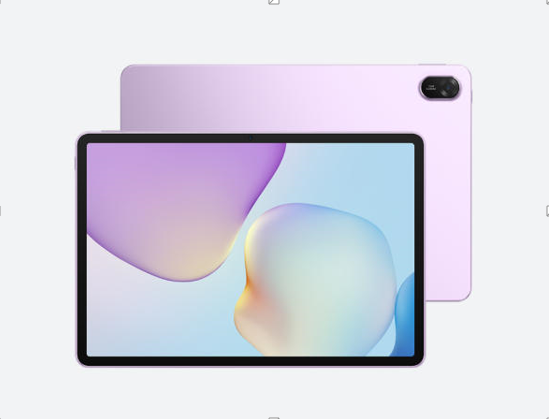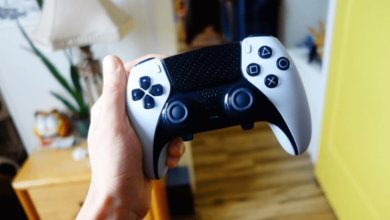Why Is My Tablet’s Touch Screen Not Responding?

Touch screens are now the heart of how we interact with our devices. From scrolling through social media to attending online classes or checking emails, almost everything depends on smooth touch responses. When your tablet suddenly stops responding, it can feel frustrating and even alarming, especially if you rely on it for work or school. The good news is that not all touch problems mean your tablet is permanently broken. Sometimes the solution is surprisingly simple. In this article, we will walk through practical troubleshooting methods to help you bring your tablet back to life.
Immediate Fixes: Simple Solutions That Work
The Restart and Force Reboot Methods
Sometimes the most effective solutions are the simplest. Restarting your tablet can clear temporary glitches that affect the touch screen. If the device is completely unresponsive, a force reboot may be necessary, which is usually done by holding down the power button for an extended time. This forces the system to reload and often restores touch functionality. People are often surprised at how many issues disappear after this step. It works because small system errors or memory overloads can prevent the screen from responding correctly. If your tablet feels warm or sluggish before the touch stopped working, a reboot is even more likely to solve the problem.
Cleaning the Screen Properly and Removing Protectors
Another often-overlooked cause of unresponsive touch screens is simply dirt or obstructions. Oils from your hands, dust particles, or even tiny food crumbs can interfere with touch sensors. A microfiber cloth slightly dampened with water or screen-safe cleaner can restore sensitivity. It’s also worth checking if your screen protector has shifted, cracked, or bubbled, which can block touch input. Removing an old protector can instantly improve responsiveness. Many users discover that their touch screen wasn’t failing—it was just being blocked by debris or accessories. Taking five minutes to clean your device can save unnecessary trips to a repair shop.

Software Issues: When the OS Causes Problems
Sometimes, the problem lies deeper than dirt or simple glitches. Software bugs, failed updates, or conflicting apps can all cause the touch screen to stop responding. For instance, if you recently installed a new app and the problem started immediately afterward, uninstalling it could be the key. Updating your operating system can also help since manufacturers frequently release patches to fix these exact issues. Running your tablet in safe mode is another useful test. If the screen works fine in safe mode, that’s a strong sign an app is responsible.
See also: Why Transaction Monitoring Is Critical for Fintech and Banks
Calibration Problems: Restoring Touch Accuracy
Even if your screen responds, touches may feel inaccurate. You might tap one area, but the device registers the action elsewhere. This points to a calibration issue, where the screen and software are not aligned properly. Many tablets allow you to recalibrate the display through settings or hidden diagnostic tools. By following these steps, you can restore the precise accuracy needed for tasks like writing notes, drawing diagrams, or simply typing smoothly. Calibration problems can also occur after system updates or prolonged use. Spending a few minutes to reset the calibration ensures your tablet feels as natural and accurate as when it was new.
Physical Damage: Recognizing Hardware Issues
Cracked Screens and Digitizer Damage
Unfortunately, not every problem is fixable with quick steps. If your screen is cracked, the digitizer beneath—the layer that detects touch—may be damaged. In such cases, touch issues will not improve with cleaning or restarting. A crack may seem small, but even hairline fractures can disrupt signals. If your tablet dropped recently and touch stopped working immediately after, physical damage is the most likely culprit. While professional repair might be required, recognizing the cause early saves you from wasting time on software-based fixes.
Water Damage and Internal Component Issues
Another common cause of touch failure is exposure to water or excessive humidity. Even a small splash or using your tablet with damp hands can allow moisture to seep into the device. Water disrupts the delicate circuitry that powers the screen’s responsiveness. Over time, corrosion may develop, leading to worsening problems. If your tablet recently encountered water, powering it down immediately and drying it thoroughly may help prevent permanent damage. However, once corrosion sets in, repairs are often unavoidable.
Accessory Interference: External Factors
Sometimes the issue is not with the tablet itself but with the accessories you use. Styluses, gloves, or even certain types of screen covers can reduce touch sensitivity. Non-compatible accessories may not interact correctly with the tablet’s technology. For example, gloves without touchscreen capability can make it seem like the screen is broken when it’s not. Even using a charger that delivers unstable power can sometimes cause touch screens to act unpredictably. Testing your device without accessories connected or attached is a quick way to rule this out.
Advanced Solutions: Last Resort Options
Factory Reset Considerations
If all other methods fail, a factory reset may be your last option. This step erases all personal data and settings, restoring your tablet to its original condition. It often resolves deep software conflicts that cannot be fixed otherwise. However, it should only be attempted after backing up important files and when you are prepared to set up your device again from scratch.
When to Seek Professional Repair
There are limits to what you can do at home. If physical damage, water issues, or persistent unresponsiveness remain after all troubleshooting steps, professional repair may be unavoidable. A trained technician can identify whether the digitizer, motherboard, or other internal parts need replacement. At this stage, it’s also wise to consider the age and overall condition of your tablet. Sometimes replacing the device entirely is a more cost-effective decision.
Conclusion
Fixing an unresponsive tablet screen is often simpler than it seems. Start by restarting your device and cleaning the screen—many issues resolve with basic troubleshooting. For persistent problems like physical damage, consider repair or replacement. If constant fixes become frustrating, upgrading to a reliable model like the Huawei MatePad 11.5 offers smooth performance and responsive touch at a competitive matepad 11.5 price. With a logical approach, you can solve most touch screen issues and enjoy a seamless digital experience.





